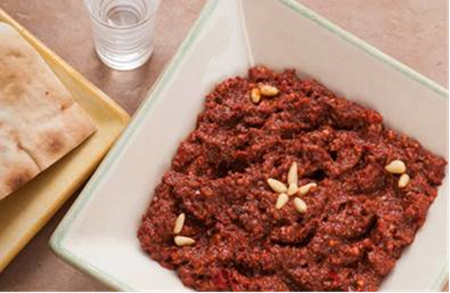“Aleppo, Syria can boast one of the richest, most diverse cuisines in the world. Syrian cuisine mainly uses eggplant, zucchini, garlic, meat (mostly from lamb and sheep), sesame seeds, rice, chickpeas, fava beans, lentils, cabbage, cauliflower, vine leaves, pickled turnips, cucumbers, tomatoes, olive oil, lemon juice, mint, pistachios, honey and fruits. Despite its wide acclaim, only a handful of Aleppo dishes are ever served at Middle Eastern restaurants today, including in Los Angeles,” says retired engineer and author, Alec Ekmekji. “It remains a cuisine of many great home cooks and chefs.”
A few years ago, Aleppo natives Seta Ekmekji (Alec’s mother), and her sister-in-law, Rhoda Margossian, compiled some family recipes to leave to their children, a project that developed into a life of its own, and turned into an impressive ethnic cookbook. Seta and Rhoda worked together to document each recipe, and their cookbook, Memories of Aleppo, was published in 2016. Memories of Aleppo is a treasured collection of the family’s favorite Aleppo recipes that can be enjoyed for many generations.

“These recipes represent the cooking style and cuisine of the Armenians who lived in Aleppo for centuries,” adds Rhoda. “Many recipes are vegetarian and vegan, including this Muhammara. Aleppo pepper is an important ingredient in Middle Eastern cuisine. It is a Syrian variety of hot pepper, characterized by its fruity, cumin-like flavor with moderate heat that builds over time. It is used as a spice in numerous dishes in order to provide them with some heat.” Each of the recipes was beautifully photographed by their son/nephew, Raffi Alexander at Spiderbox Photography, in La Canada, California.
“We were schoolmates in the American High School for Girls in Aleppo,” says Seta. “Later on, one of us married the other’s brother and we became relatives as well as very close friends, and we are still close, and continue to talk with each other on the telephone every day.”
“This recipe,” adds Rhoda, “is a delicacy of contrasting flavors: olive oil, red pepper, pomegranate molasses, and walnuts. Its magical qualities lie in the fact that when you eat it, you taste all of the wonderful flavors simultaneously. Although Muhammara is usually eaten as a dip, it goes well with turkey, especially left-over turkey. Muhammara and turkey between two slices of toasted bread makes the perfect sandwich.”










